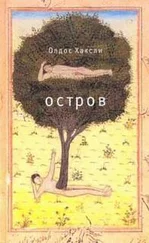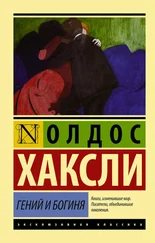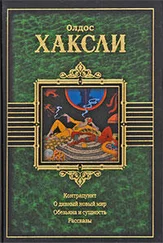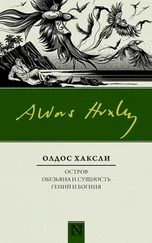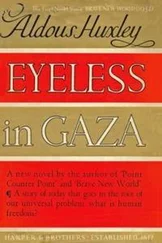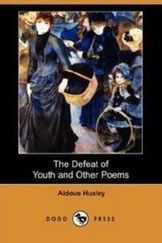Ours is the age, among other things, of the automobile and of rocketing population. Alcohol is incompatible with safety on the roads, and its production, like that of tobacco, condemns to virtual sterility many millions of acres of the most fertile soil. The problems raised by alcohol and tobacco cannot, it goes without saying, be solved by prohibition. The universal and ever–present urge to self–transcendence is not to be abolished by slamming the currently popular Doors in the Wall. The only reasonable policy is to open other, better doors in the hope of inducing men and women to exchange their old bad habits for new and less harmful ones. Some of these other, better doors will be social and technological in nature, others religious or psychological, others dietetic, educational, athletic. But the need for frequent chemical vacations from intolerable selfhood and repulsive surroundings will undoubtedly remain. What is needed is a new drug which will relieve and console our suffering species without doing more harm in the long run than it does good in the short. Such a drug must be potent in minute doses and synthesizable. If it does not possess these qualities, its production, like that of wine, beer, spirits and tobacco will interfere with the raising of indispensable food and fibres. It must be less toxic than opium or cocaine, less likely to produce undesirable social consequences than alcohol or the barbiturates, less inimical to heart and lungs than the tars and nicotine of cigarettes. And, on the positive side, it should produce changes in consciousness more interesting, more intrinsically valuable than mere sedation or dreaminess, delusions of omnipotence or release from inhibition.
To most people, mescalin is almost completely innocuous. Unlike alcohol, it does not drive the taker into the kind of uninhibited action which results in brawls, crimes of violence and traffic accidents. A man under the influence of mescalin quietly minds his own business. Moreover, the business he minds is an experience of the most enlightening kind, which does not have to be paid for (and this is surely important) by a compensatory hangover. Of the long–range consequences of regular mescalin taking we know very little. The Indians who consume peyote buttons do not seem to be physically or morally degraded by the habit. However, the available evidence is still scarce and sketchy. [2] In his monograph Menomini Peyotism , published (December 1952) in the Transactions of the American Philosophical Society, Professor J.S. Slotkin has written that ‘the habitual use of Peyote does not seem to produce any increased tolerance or dependence. I know many people who have been Peyotists for forty to fifty years. The amount of Peyote they use depends upon the solemnity of the occasion; in general they do not take any more Peyote now than they did years ago. Also, there is sometimes an interval of a month or more between rites, and they go without Peyote during this period without feeling any craving for it. Personally, even after a series of rites occurring on four successive weekends, I neither increased the amount of Peyote consumed nor felt any continued need for it.’ It is evidently with good reason that ‘Peyote has never been legally declared a narcotic, or its use prohibited by the federal government.’ However, ‘during the long history of Indian–white contact, white officials have usually tried to suppress the use of Peyote, because it has been conceived to violate their own mores. But these attempts have always failed.’ In a footnote Dr Slotkin adds that it is amazing to hear the fantastic stories about the effects of Peyote and the nature of the ritual, which are told by the white and Catholic Indian officials in the Menomini Reservation. None of them have had the slightest first–hand experience with the plant or with the religion, yet some fancy themselves to be authorities and write official reports on the subject.’
Although obviously superior to cocaine, opium, alcohol and tobacco, mescalin is not yet the ideal drug. Along with the happily transfigured majority of mescalin takers there is a minority that finds in the drug only hell or purgatory. Moreover, for a drug that is to be used, like alcohol, for general consumption, its effects last for an inconveniently long time. But chemistry and physiology are capable nowadays of practically anything. If the psychologists and sociologists will define the ideal, the neurologists and pharmacologists can be relied upon to discover the means whereby that ideal can be realized or at least (for perhaps this kind of ideal can never, in the very nature of things, be fully realized) more nearly approached than in the wine–bibbing past, the whisky–drinking, marijuana–smoking and barbiturate–swallowing present.
The urge to transcend self–conscious selfhood is, as I have said, a principal appetite of the soul. When, for whatever reason, men and women fail to transcend themselves by means of worship, good works and spiritual exercises, they are apt to resort to religion’s chemical surrogates—alcohol and ‘goof–pills’ in the modern West, alcohol and opium in the East, hashish in the Mohammedan world, alcohol and marijuana in Central America, alcohol and coca in the Andes, alcohol and the barbiturates in the more up–to–date regions of South America. In Poisons Sacrés, Ivresses Divines Philippe de Félice has written at length and with a wealth of documentation on the immemorial connection between religion and the taking of drugs. Here, in summary or in direct quotation, are his conclusions. The employment for religious purposes of toxic substances is ‘extraordinarily widespread … The practices studied in this volume can be observed in every region of the earth, among primitives no less than among those who have reached a high pitch of civilization. We are therefore dealing not with exceptional facts, which might justifiably be overlooked, but with a general and, in the widest sense of the word, a human phenomenon, the kind of phenomenon which cannot be disregarded by anyone who is trying to discover what religion is, and what are the deep needs which it must satisfy.’
Ideally, everyone should be able to find self–transcendence in some form of pure or applied religion. In practice it seems very unlikely that this hoped for consummation will ever be realized. There are, and doubtless there always will be, good churchmen and good churchwomen for whom, unfortunately, piety is not enough. The late G.K. Chesterton, who wrote at least as lyrically of drink as of devotion, may serve as their eloquent spokesman.
The modern Churches, with some exceptions among the Protestant denominations, tolerate alcohol; but even the most tolerant have made no attempt to convert the drug to Christianity, or to sacramentalize its use. The pious drinker is forced to take his religion in one compartment, his religion–surrogate in another. And perhaps this is inevitable. Drinking cannot be sacramentalized except in religions which set no store on decorum. The worship of Dionysos or the Celtic god of beer was a loud and disorderly affair. The rites of Christianity are incompatible with even religious drunkenness. This does no harm to the distillers, but is very bad for Christianity. Countless persons desire self–transcendence and would be glad to find it in church. But, alas, ‘the hungry sheep look up and are not fed.’ They take part in rites, they listen to sermons, they repeat prayers; but their thirst remains unassuaged. Disappointed, they turn to the bottle. For a time at least and in a kind of way, it works. Church may still be attended; but it is no more than the Musical Bank of Butler’s Erewhon . God may still be acknowledged; but He is God only on the verbal level, only in a strictly Pickwickian sense. The effective object of worship is the bottle and the sole religious experience is that state of uninhibited and belligerent euphoria which follows the ingestion of the third cocktail.
Читать дальше
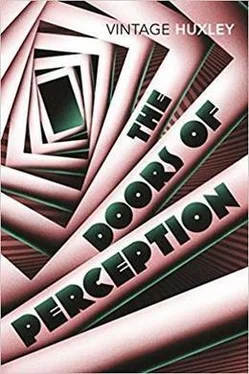
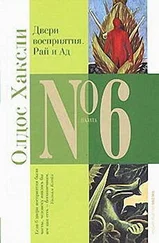

![Олдос Хаксли - О дивный новый мир [Прекрасный новый мир]](/books/11834/oldos-haksli-o-divnyj-novyj-mir-prekrasnyj-novyj-thumb.webp)
